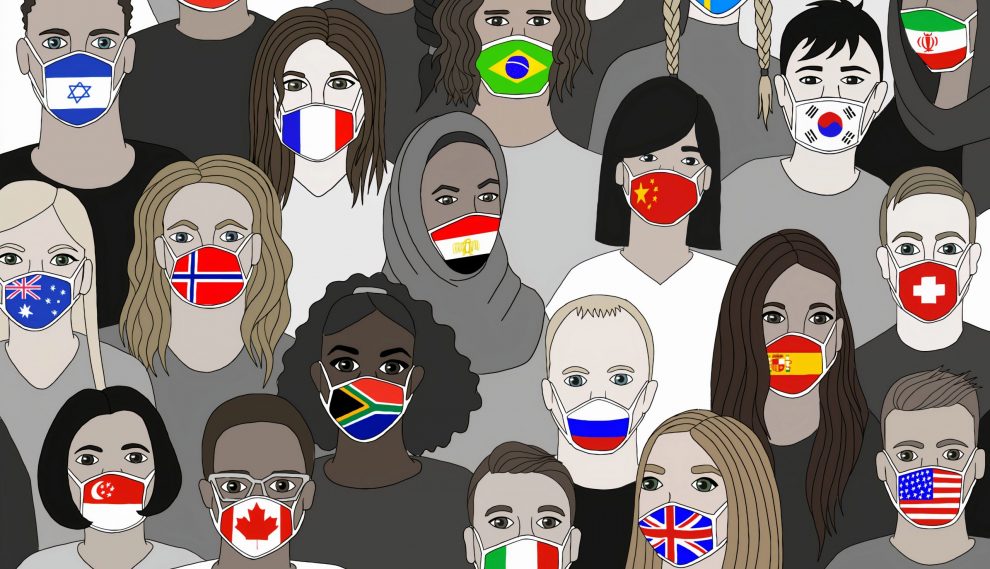One cold day in March, the Sosa family was getting ready for dinner when they heard on the evening news that their state had been ordered to shelter in place. Businesses were closed, only essential workers could go to work, and everyone had to practice social distancing when out and about, whether walking the dog or picking up groceries.
The Sosa’s 13-year-old daughter, an altar server at their home parish, asked her parents if they would still be going to church. But news quickly spread that all churches were closed for worship.
For the Sosa family, their home parish is a place of communion and of fellowship both with other parishioners and with God. And one of the most profound expressions of this is in the Holy Eucharist.
In the Eucharist, Catholics’ sense of communion with other parishioners converges with union with Jesus Christ. This communion with Christ and the assembly of God’s people gives the Sosas and other people of faith a sense of communion and community.
The same could be said of the Samaritan woman at the well in John Chapter 4. She goes to a public water source during a time when there is almost no one else there; she apparently loathes communion with people. She seems to despise Jesus’ presence, resenting him for ending her solo trip to Jacob’s well. In an attempt to make him keep his distance, she plays the race card, saying, “How is it that you, a Jew, ask a drink of me, a woman of Samaria?” (4:9).
But soon, she becomes talkative, suggesting that she, too, has a deep yearning for communion. She starts asking questions and engaging Jesus in conversation (4:11–26). In a moment, therefore, her need for water morphs into a desire for communion with Jesus Christ.
After their interaction, surmising that he is the Messiah, she races back to town, where she knocks at doors and inviting everyone to come and share in her communion with Jesus Christ. Her experience of communion fills her with deep appreciation of herself, humanity, and fellowship with the divine.
This same human need for community is what drives the crowd seeking for Jesus in John’s Gospel, Chapter 6 after Jesus feeds the 5,000. The gospel says that the crowd travels to Capernaum “looking for Jesus” (6:24). When they find him, they show an unpretentious expression of relief: “Rabbi, when did you come here?” (6:25).
They might not have been aware of their deep need for Christ, but there is no discounting the fact that the story shows a burgeoning quest for communion with Jesus Christ.
As the crowd once again gathers around Jesus in hope of another round of physical nourishment, Jesus instead offers himself as the nourishment that gives life to the world (6:51).
Today, we experience the same thing as the crowd in Holy Communion, divine communion and a deeply profound experience with Christ who is present among us. As expressed during the Second Vatican Council, the church maintains that the Holy Eucharist is an experience of love, unity, and charity in the presence of God, who fills us with the grace of life and hope of future glory.
Catholics, including the Sosa family, are ennobled and strengthened through their participation in the Eucharist. John tells us at the beginning of his gospel that the Holy Eucharist is “the Word became flesh and lived among us” (1:14). But Catholics have seen this experience of communion and community halted since sheltering in place to stop the spread of COVID-19. This has led to experiences of disconnection, isolation, and loneliness. Many are beginning to fear the worst in their social and spiritual life without parish life and the experience of Christ in the Eucharist.
Catholics are waiting for their parishes to come alive again as a place of communion, of fellowship and unity with one another and with Jesus Christ. But we have received a pledge that Christ will be with us to the end of time (Matt. 28:20), and we should remain mindful of the various ways that Christ is among us even without being able to experience Holy Eucharist.
Christ is present through those making sure our grocery stores have enough supplied to meet our needs. We can feel the presence of Christ through the shows of solidarity with essential workers that ring out in our streets. We can certainly feel the presence of Christ in the drive-through birthday celebrations or in the waves and smiles a neighbor walking a dog, and other small moments of connection and communion with one another.
Like the Samaritan woman, we should reach out to one and all, building communion, community, and unity during this pandemic: Even a prayer said over Facetime can unite us in a profound and meaningful way. In these and many other ways, our longing for Christ and parish life is kept alive through our solidarity with one another.
Image: United Nations COVID-19 Response on Unsplash













Add comment